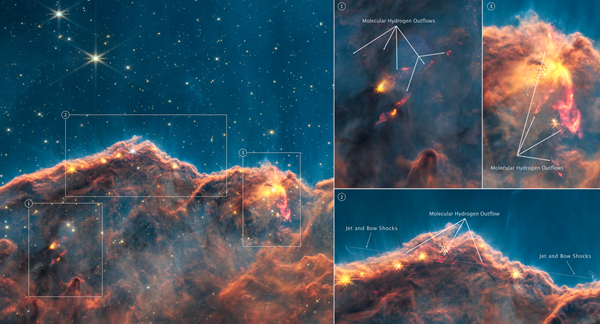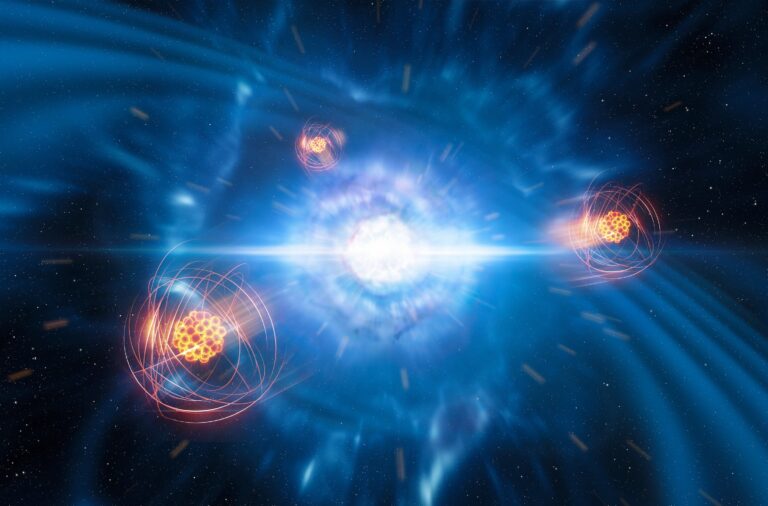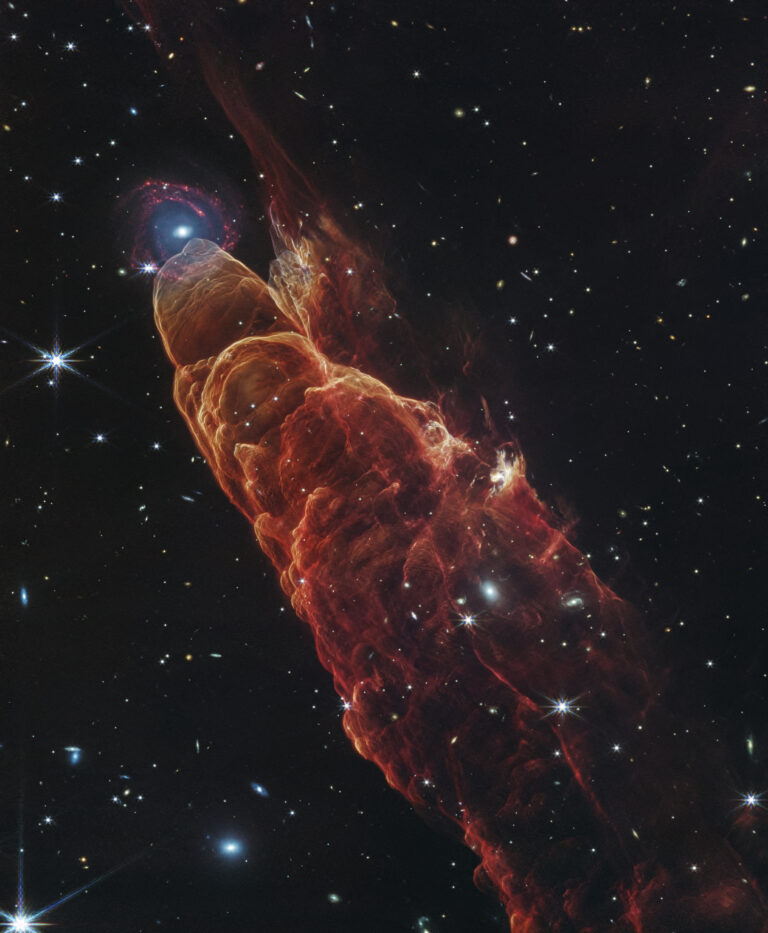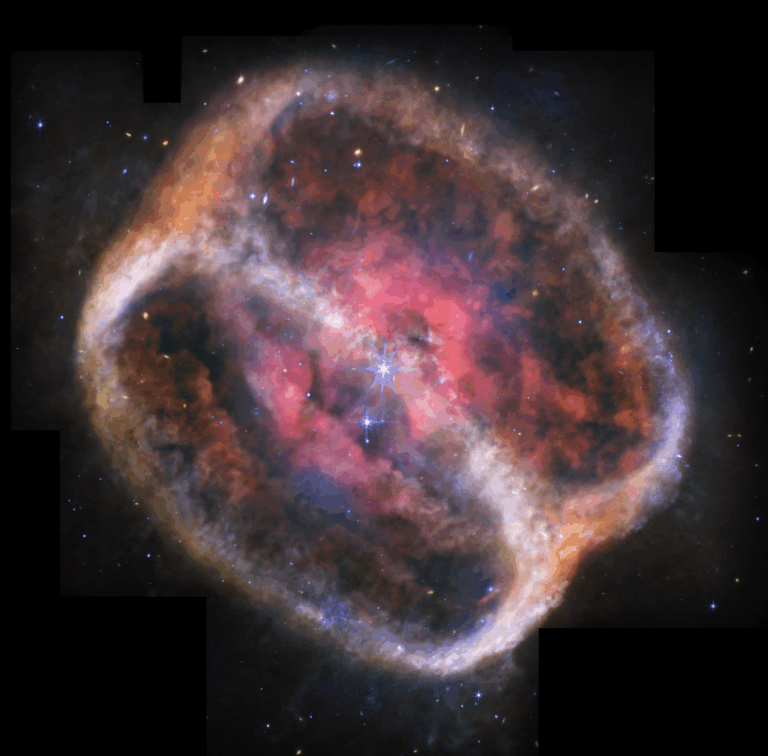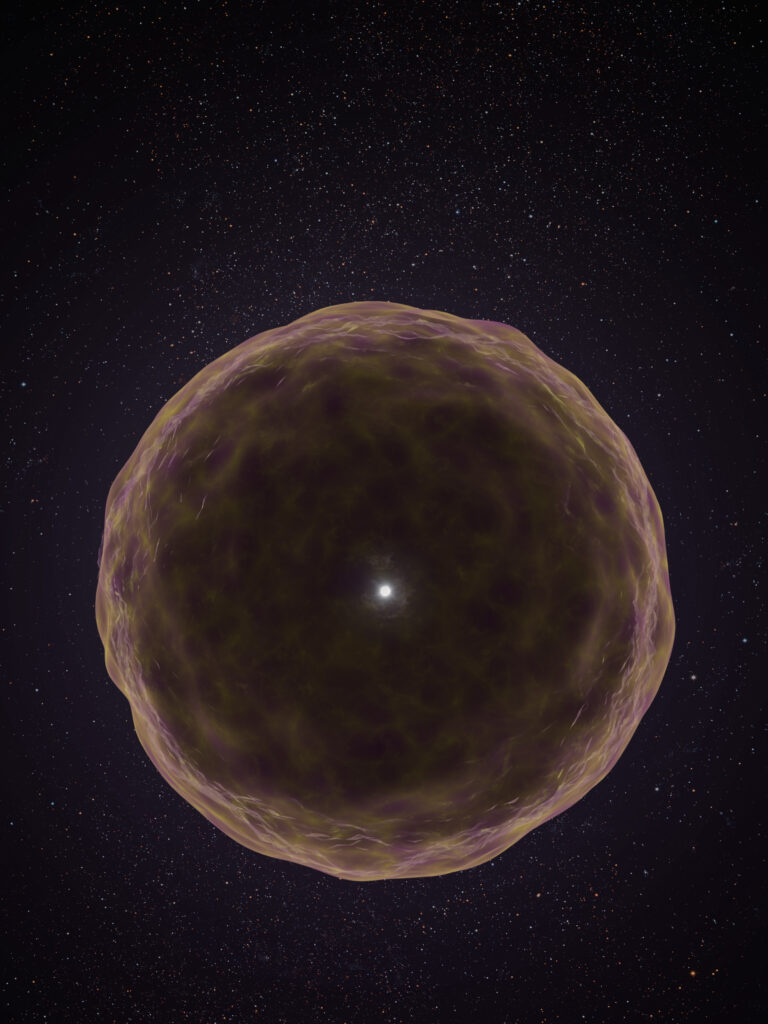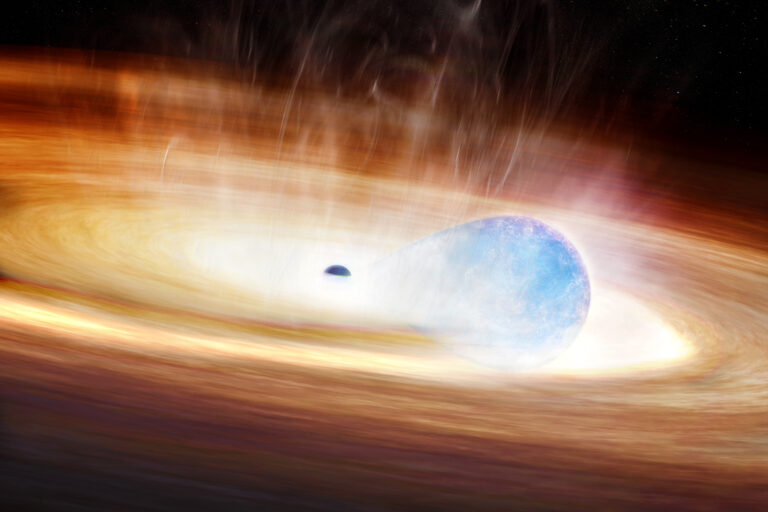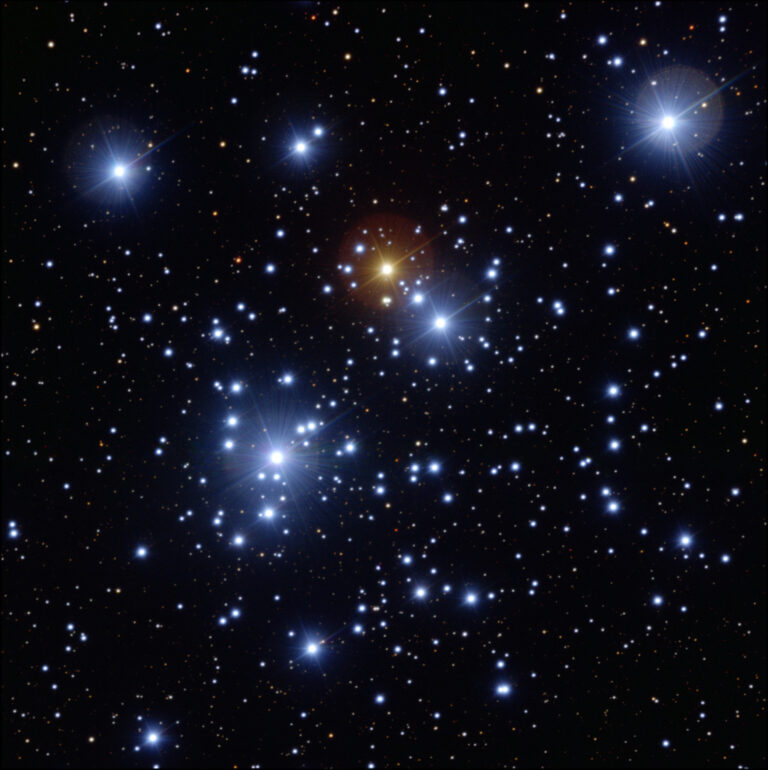Key Takeaways:
When NASA released the first science images from the James Webb Space Telescope (JWST) in July, one of the standouts was of the Cosmic Cliffs — a region at the edge of the star cluster NGC 3324 in the constellation Carina. Since then, researchers have been analyzing the data that went into that image, highlighting young star formation in the region.
Located 7,600 light years from Earth, the region has been the subject of numerous studies since the Hubble Space Telescope captured it 16 years ago. Although the area is known for spawning stars, its abundant gas clouds absorb much of the light at visible wavelengths, making it difficult for Hubble to view the stars in detail. By analyzing data from JWST’s Near-Infrared Camera (NIRCam) at a wavelength of 4.7 microns, researchers permeated the puffs and found 24 outflows, small and large, of molecular hydrogen jets throughout the region.
The image captures activity that is key to understanding the early, fledgling days of stars similar to our Sun. Young stars suck up material and then emit some of it back in the form of jets and outflows. This period of a star’s life is brief — only a few thousand years out of the millions of years it takes to form a star. As a release from NASA explains, this early stage of star formation was not well documented before JWST.
“It opens the door for what’s going to be possible in terms of looking at these populations of newborn stars in fairly typical environments of the universe that have been invisible up until the James Webb Space Telescope,” says astronomer Megan Reiter of Rice University, who led the study published in Monthly Notices of the Royal Astronomical Society in December.
Researchers have also been able to compare other features that JWST sees to existing Hubble data to measure how some of these outflows have evolved over time.


